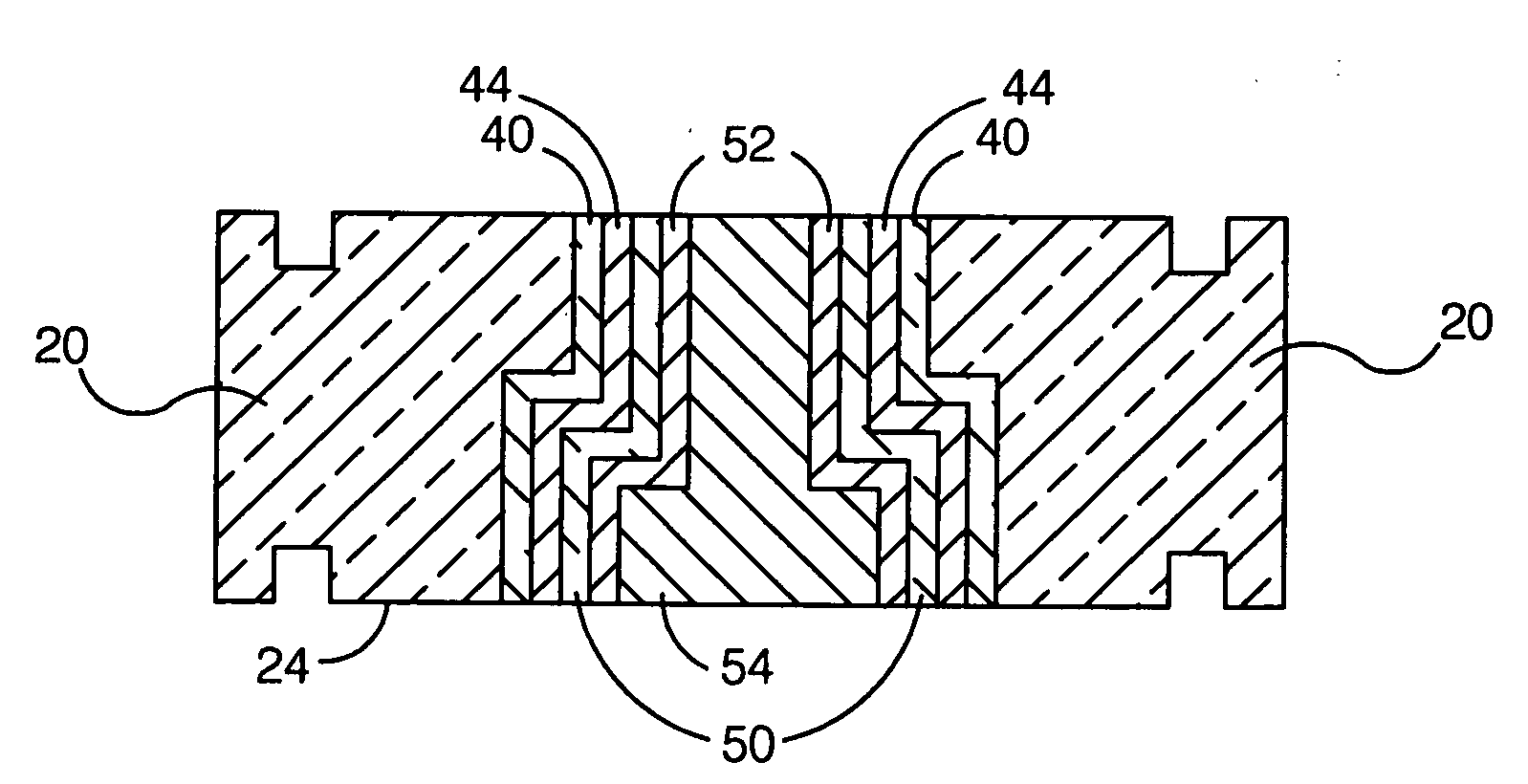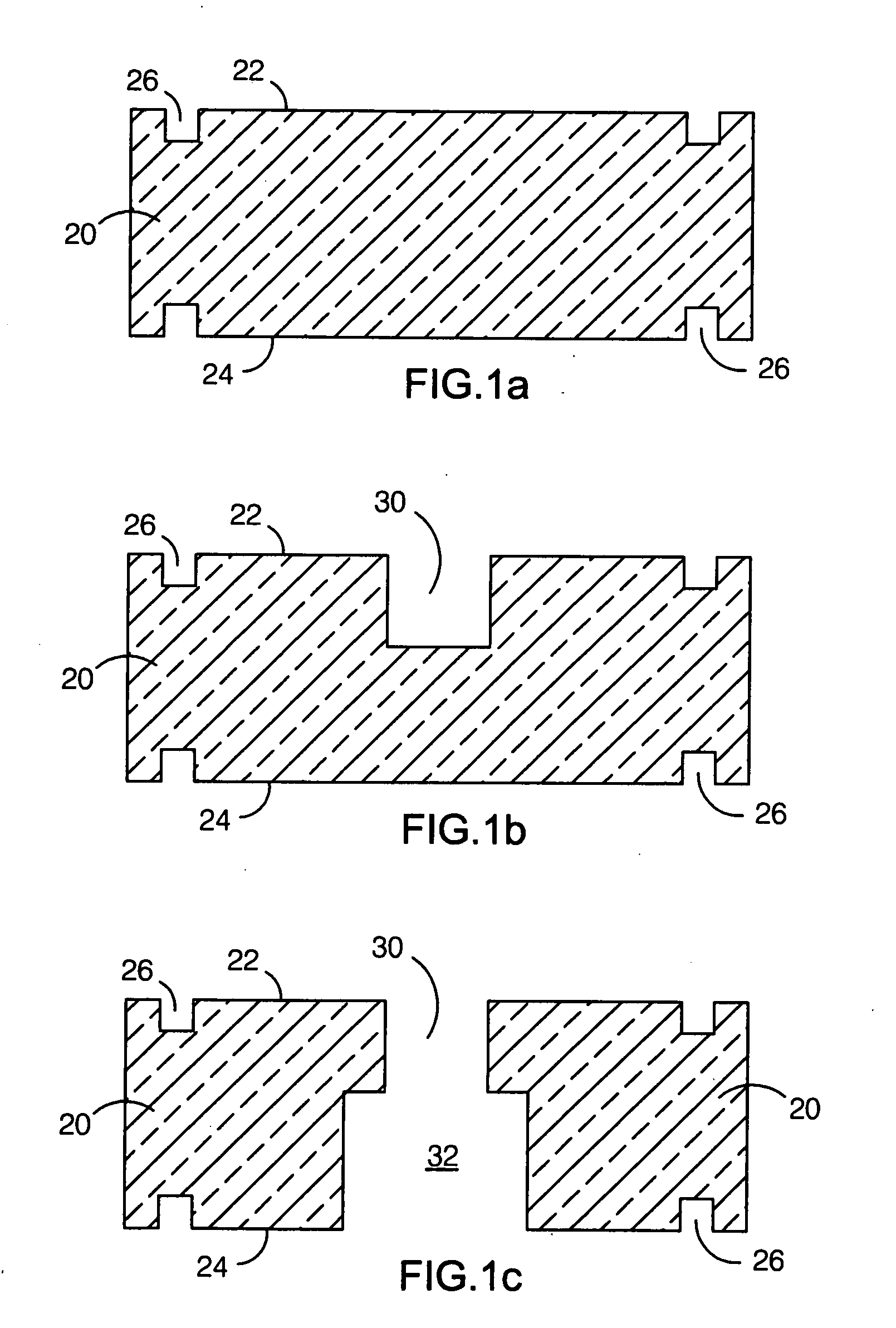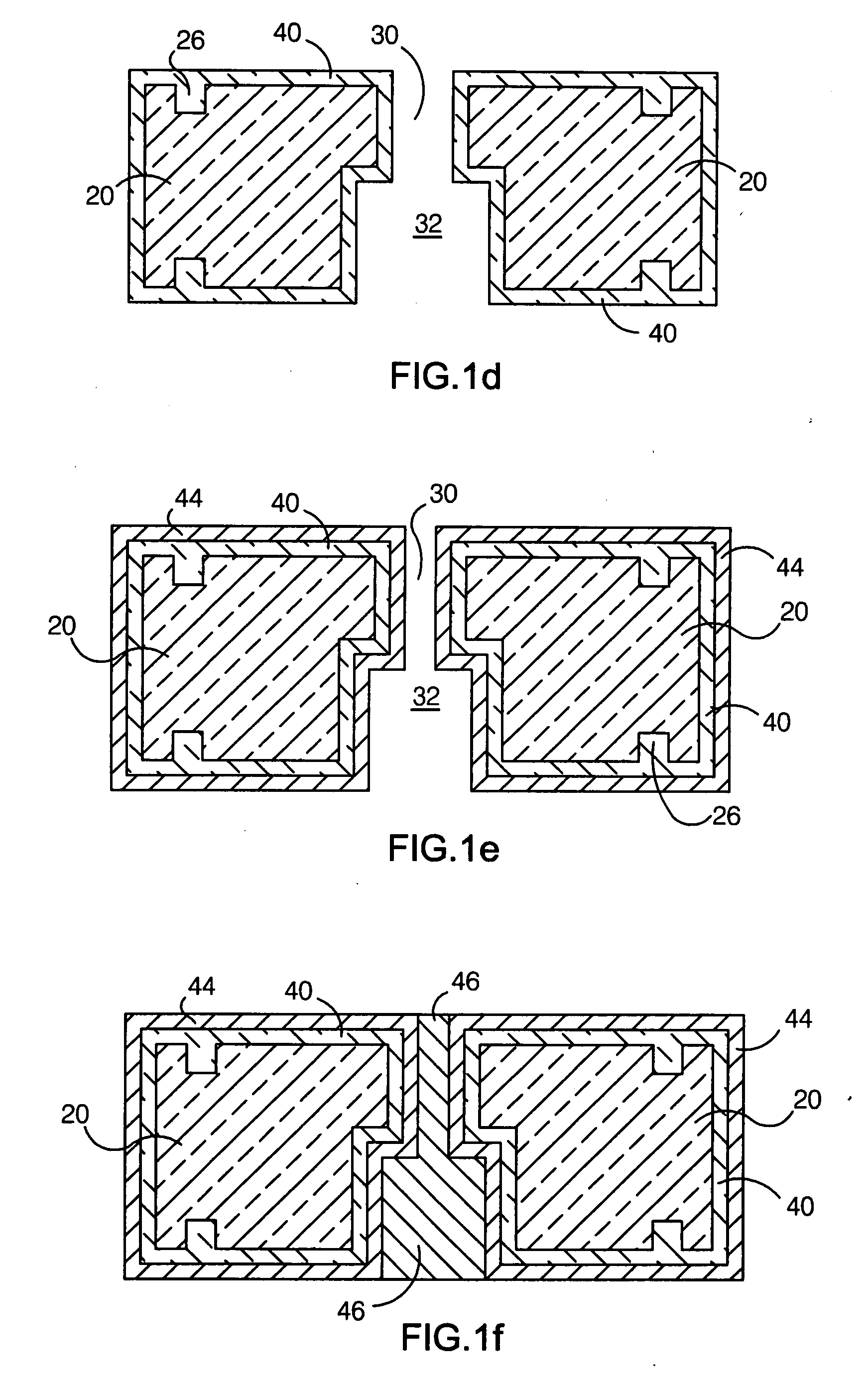Through-substrate vias and method of fabricating same
- Summary
- Abstract
- Description
- Claims
- Application Information
AI Technical Summary
Benefits of technology
Problems solved by technology
Method used
Image
Examples
Embodiment Construction
[0016]The present method is directed to a process for fabricating high aspect ratio through-substrate vias. The basic process steps are illustrated in the series of sectional views shown in FIGS. 1a-1g. In FIG. 1a, a substrate 20 has a first surface 22 and a second surface 24. Circuitry (not shown) may be disposed on first surface 22, on second surface 24, and / or between surfaces 22 and 24. The substrate may be made from any of a number of semiconductor materials, including but not limited to, silicon, gallium arsenide or indium phosphate. Alignment marks 26 may be etched on the first and second surfaces, to facilitate alignment of the substrate during subsequent process steps.
[0017]In FIG. 1b, a first cavity 30 is etched into first surface 22. The first cavity has a first diameter, and extends a first depth into the substrate. The first diameter is typically chosen to minimize the consumed circuit area on surface 22. The first depth is typically chosen to enable the first cavity to...
PUM
 Login to View More
Login to View More Abstract
Description
Claims
Application Information
 Login to View More
Login to View More - Generate Ideas
- Intellectual Property
- Life Sciences
- Materials
- Tech Scout
- Unparalleled Data Quality
- Higher Quality Content
- 60% Fewer Hallucinations
Browse by: Latest US Patents, China's latest patents, Technical Efficacy Thesaurus, Application Domain, Technology Topic, Popular Technical Reports.
© 2025 PatSnap. All rights reserved.Legal|Privacy policy|Modern Slavery Act Transparency Statement|Sitemap|About US| Contact US: help@patsnap.com



